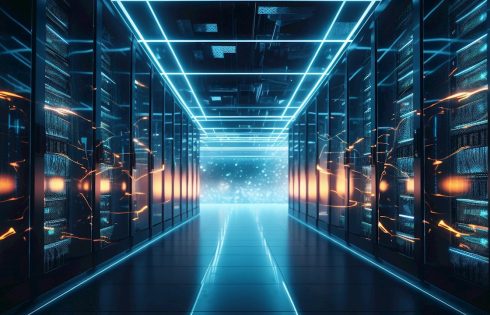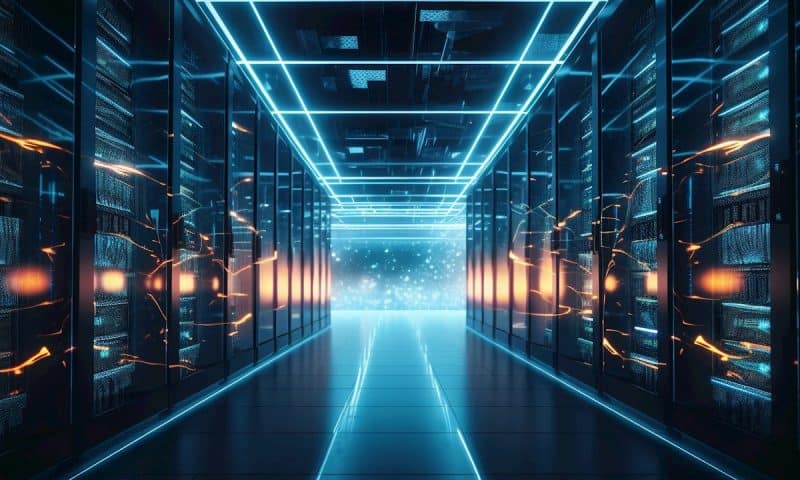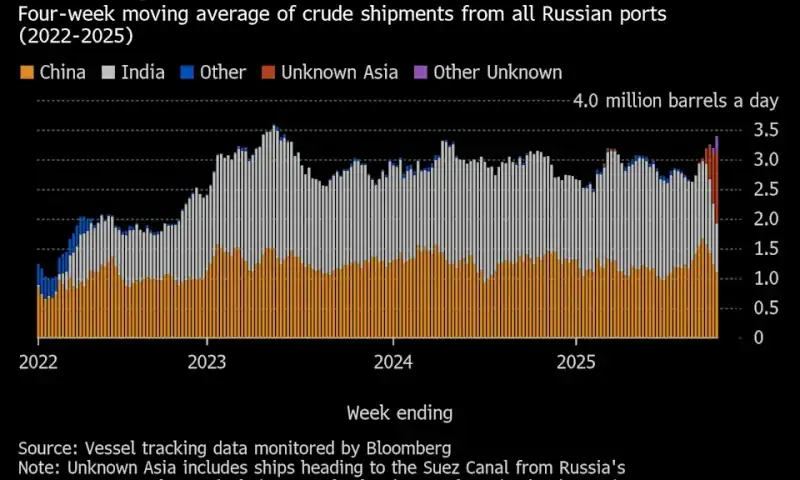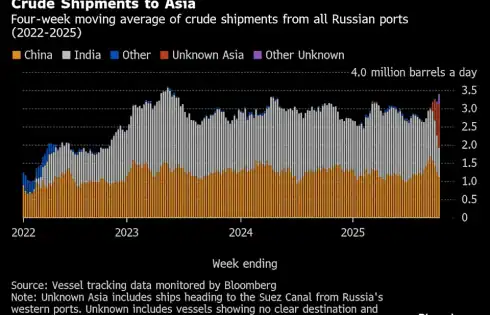
WASHINGTON (AP) — Inflation has risen in three of the last four months and is slightly higher than it was a year ago, when it helped sink then-Vice President Kamala Harris’ presidential campaign. Yet you wouldn’t know it from listening to President Donald Trump or even some of the inflation fighters at the Federal Reserve.
Trump told the United Nations General Assembly late last month: “Grocery prices are down, mortgage rates are down, and inflation has been defeated.”
And at a high-profile speech in August, just before the Fed cut its key interest rate for the first time this year, Federal Reserve Chair Jerome Powell said: “Inflation, though still somewhat elevated, has come down a great deal from its post-pandemic highs. Upside risks to inflation have diminished.”
Yet dismissing or even downplaying inflation while it is still above the Fed’s target of 2% poses big risks for the White House and the Federal Reserve. For the Trump administration, it could find itself on the wrong side of a potent issue: Surveys show that many Americans still see high prices as a major burden on their finances.
The Fed may be taking an even bigger gamble: It has cut its key interest rate on the assumption that the Trump administration’s tariffs will only cause a temporary bump up in inflation. If that turns out to be wrong — if inflation gets worse or remains elevated for longer than expected — the Fed’s inflation-fighting credibility could take a hit.
That credibility plays a crucial role in the Fed’s ability to keep prices stable. If Americans are confident that the central bank can keep inflation in check, they won’t take steps — such as demanding sharply higher pay when prices rise — that can launch an inflationary spiral. Companies often increase prices further to offset higher labor costs.
But Karen Dynan, a senior fellow at the Peterson Institute for International Economics, said this week that with memories of pandemic-era inflation still fresh and tariffs pushing up the cost of imported goods, consumers and businesses could start to lose confidence that inflation will stay low.
“If that proves to be the case, in hindsight it will be that the Fed cuts — and I do expect several more — are going to be seen as a mistake,” Dynan said.
So far, the Trump administration’s tariffs haven’t lifted inflation as much as as many economists expected earlier this year. And it remains far below its 9.1% peak three years ago. Still, consumer prices increased 2.9% in August from a year earlier, up from 2.6% at the same time last year and above the Fed’s 2% target.
The government is scheduled to release the September inflation report on Wednesday, but the data will probably be delayed by the government shutdown.
Tariffs have pushed up the cost of many imported items, including furniture, appliances, and toys. Overall, the cost of long-lasting manufactured goods rose nearly 2% in August from a year earlier. It was a modest gain, but comes after nearly three decades when the cost of such items mostly fell.
The cost of some everyday goods are still rising more quickly than before the pandemic: Grocery prices moved up 2.7% in August from a year ago, the largest gain, outside the pandemic, since 2015. Coffee prices have soared nearly 21% in the past year, partly because Trump has slapped 50% import taxes on Brazil, a leading coffee exporter, and also because climate change-induced droughts have cut into coffee bean harvests.
Most Fed officials are still concerned that inflation is too high, according the minutes of its Sept. 16-17 meeting. Yet they still chose to cut their key interest rate, because they were more worried about the risk of worsening unemployment than about higher inflation.
But the concern for some economists is that the ongoing rollout of tariffs and the fact that many companies are still implementing price hikes in response could result in more than just a temporary boost to inflation.
“It is a big gamble after what we’ve been going through … to count on it being transitory,” said Jason Furman, an economist at Harvard University and a former top adviser to President Barack Obama. “Once upon a time, (3% inflation) would have been considered really high.”
Just two weeks ago, Trump slapped new tariffs on a range of products, including 100% on pharmaceuticals, 50% on kitchen cabinets and bathroom vanities, and 25% on heavy trucks. On Friday, he threatened “a massive increase of tariffs” on imports from China in response to that country’s restrictions on rare earth exports.
Some companies are still raising prices to offset the tariff costs. Duties on steel and aluminum imports have pushed up the cost of the cans used by Campbell Soups, leading the company’s CEO to say in September that it will implement “surgical pricing initiatives.”
Chris Butler, CEO of National Tree Company, the nation’s largest artificial Christmas tree seller, says his company will raise prices by about 10% this holiday season on its trees, wreaths, and garlands to offset tariff costs. About 45% of its trees are made in China, with the rest from Southeast Asia, Mexico, and other countries. The cost of labor and real estate is too high to make them in the United States, he said.
Butler also expects there will be a reduced supply of artificial trees and decorations this year, which could lift industry-wide prices further, because most production in China shut down when tariffs on that country hit 145% earlier this year. Production resumed after Trump reduced the duties to 30% but at a slower pace.
Butler has pushed his suppliers to absorb some of the cost of the tariffs, but they won’t pay all of it.
“At the end of the day, we can’t absorb the entirety of it and our factories can’t absorb the entirety of it,” he said. “So we’ve had to pass along some of the increases to consumers.”
Many Fed policymakers are aware of the risks. Jeffrey Schmid, president of the Federal Reserve Bank of Kansas City, who votes on interest rate decisions, said Monday that high inflation that results from a loss of confidence in the central bank is harder to fight than other price spikes, such as those that result from supply disruptions.
“The Fed must maintain its credibility on inflation,” Schmid said. “History has shown that while all inflations are universally disliked, not all inflations are equally costly to fight.”
Yet some Fed officials say that other trends are offsetting the impact of tariffs. Fed governor Stephen Miran, whom Trump appointed just before the central bank’s September meeting, said Tuesday that a steady slowdown in rental costs should reduce underlying inflation in the coming months. And the sharp drop in immigration as a result of the administration’s clampdown will reduce demand, he said, cooling inflation pressures.
“I’m more sanguine about the inflation outlook than a lot of other people are,” he said.










 Treasury Secretary Scott Bessent indicated his department is shuffling the flow of money through its system in order to allow for US military staff to get paid — a maneuver that his predecessor had suggested might not be possible.
“We’re having to prioritize payments,” Bessent said on Fox Business Monday. “We are having to hold back on some payments so that our brave men and women in the US military can get paid. So we are having to shuffle things around.”
The failure of Congress to pass appropriations bills for the fiscal year that began Oct. 1 has led to a shutdown of swaths of the federal government. That’s raised questions about paychecks due to US troops Oct. 15. President Donald Trump said in a Truth Social post Saturday that he had directed Defense Secretary Pete Hegseth to use “all available funds” to get the troops paid on time.
Currently, the Treasury is still making some payments, for example to Social Security beneficiaries and interest payments to bondholders, for which Congress does not need to approve annual funding.
The issue of prioritizing payments is a sensitive one with bearing on the periodic debt-limit showdowns in Washington — times when lawmakers fail to increase or suspend the ceiling for federal borrowing in a timely manner. Bondholders have long assumed that, in a worst-case scenario, the government would prioritize making interest and principal payments on Treasury securities.
But during debt-limit impasses, former Treasury Secretary Janet Yellen and some of her predecessors cast doubt over whether prioritization was possible. They pressed Congress to set aside such notions and instead accelerate an increase or suspension of the debt ceiling.
Treasury Secretary Scott Bessent indicated his department is shuffling the flow of money through its system in order to allow for US military staff to get paid — a maneuver that his predecessor had suggested might not be possible.
“We’re having to prioritize payments,” Bessent said on Fox Business Monday. “We are having to hold back on some payments so that our brave men and women in the US military can get paid. So we are having to shuffle things around.”
The failure of Congress to pass appropriations bills for the fiscal year that began Oct. 1 has led to a shutdown of swaths of the federal government. That’s raised questions about paychecks due to US troops Oct. 15. President Donald Trump said in a Truth Social post Saturday that he had directed Defense Secretary Pete Hegseth to use “all available funds” to get the troops paid on time.
Currently, the Treasury is still making some payments, for example to Social Security beneficiaries and interest payments to bondholders, for which Congress does not need to approve annual funding.
The issue of prioritizing payments is a sensitive one with bearing on the periodic debt-limit showdowns in Washington — times when lawmakers fail to increase or suspend the ceiling for federal borrowing in a timely manner. Bondholders have long assumed that, in a worst-case scenario, the government would prioritize making interest and principal payments on Treasury securities.
But during debt-limit impasses, former Treasury Secretary Janet Yellen and some of her predecessors cast doubt over whether prioritization was possible. They pressed Congress to set aside such notions and instead accelerate an increase or suspension of the debt ceiling.

 (Bloomberg) — US President Donald Trump and Chinese leader Xi Jinping’s latest tit-for-tat showdown has both countries claiming the ball is now in the other’s court, with the clock ticking toward another escalation in import tariffs.
After Trump signaled openness to doing a deal with Beijing, US Vice President JD Vance on Sunday declared the outcome would “depend on how the Chinese respond.” Hours later, China’s Foreign Ministry made clear Beijing would take its cues from Washington’s next steps, after having already unleashed what it saw as retaliatory actions.
“If the US continues on its wrong course, China will firmly take necessary measures to safeguard its legitimate rights and interests,” Foreign Ministry spokesman Lin Jian said at a regular briefing in Beijing. Chinese authorities haven’t yet retaliated to Trump’s threat to impose 100% tariffs over their latest rare-earth curbs, while saying there could be “exemptions” in order to facilitate trade.
Treasury Secretary Scott Bessent said Monday that he believes the Trump-Xi meeting “will still be on,” noting there had been “substantial communication over the weekend.” In the meantime, he expected US-China staff-level meetings this week, along with moves by the Trump administration to mobilize US allies to put pressure on Beijing, while also threatening “straight brute force countermeasures” if Beijing doesn’t act.
“This is China versus the world,” Bessent said. “They have pointed a bazooka at the supply chains and the industrial base of the entire free world. And you know, we’re not going to have it.”
The question now is which side blinks first.
The S&P 500 closed 1.6% higher Monday, its best showing since May, as investors saw the back-and-forth as strategic posturing. China’s markets showed resilience to the turmoil, with the CSI 300 benchmark for onshore shares ending Monday down just 0.5%.
While it’s hard to gauge who exactly has more leverage, what’s abundantly clear is China’s export sector can withstand US tariffs of around 50%, said Christopher Beddor, deputy China research director at Gavekal Dragonomics.
“Beijing does care if the tariffs go past 100%, but as long as that scenario doesn’t materialize, tariffs are a lesser priority,” he added. “The rare-earth actions are intended to extract US concessions on tech export controls, but it’s also not in either side’s interest to completely derail the negotiations.”
Trade data on Monday showed China’s shipments overseas growing at their fastest pace in six months, blunting the impact of any tariff hike from the US. Trump has other tools to inflict pain: He’s already threatened to thwart Beijing’s access to jet parts and stop selling China critical software.
Bessent, speaking on Fox Business Monday, said he expects to meet with his counterpart, Vice Premier He Lifeng, “in Asia” ahead of the Trump-Xi sitdown. Last month, before the current flap, he had indicated Frankfurt for the next round of talks aimed at extending a rolling 90-day truce that’s set to expire in early November. The conversations will likely lay the groundwork for concessions to resolve the latest flare up.
Ultimately, China believes it has the upper hand, said Josef Gregory Mahoney, a professor of international relations at Shanghai’s East China Normal University.
“China is confident it’s better positioned than the US to absorb any shocks from the trade war,” he said. “Trump needs a deal before the holiday shopping and maybe even before the Supreme Court rules against him,” he added, referring to a pending decision on whether his tariffs are legal.
(Bloomberg) — US President Donald Trump and Chinese leader Xi Jinping’s latest tit-for-tat showdown has both countries claiming the ball is now in the other’s court, with the clock ticking toward another escalation in import tariffs.
After Trump signaled openness to doing a deal with Beijing, US Vice President JD Vance on Sunday declared the outcome would “depend on how the Chinese respond.” Hours later, China’s Foreign Ministry made clear Beijing would take its cues from Washington’s next steps, after having already unleashed what it saw as retaliatory actions.
“If the US continues on its wrong course, China will firmly take necessary measures to safeguard its legitimate rights and interests,” Foreign Ministry spokesman Lin Jian said at a regular briefing in Beijing. Chinese authorities haven’t yet retaliated to Trump’s threat to impose 100% tariffs over their latest rare-earth curbs, while saying there could be “exemptions” in order to facilitate trade.
Treasury Secretary Scott Bessent said Monday that he believes the Trump-Xi meeting “will still be on,” noting there had been “substantial communication over the weekend.” In the meantime, he expected US-China staff-level meetings this week, along with moves by the Trump administration to mobilize US allies to put pressure on Beijing, while also threatening “straight brute force countermeasures” if Beijing doesn’t act.
“This is China versus the world,” Bessent said. “They have pointed a bazooka at the supply chains and the industrial base of the entire free world. And you know, we’re not going to have it.”
The question now is which side blinks first.
The S&P 500 closed 1.6% higher Monday, its best showing since May, as investors saw the back-and-forth as strategic posturing. China’s markets showed resilience to the turmoil, with the CSI 300 benchmark for onshore shares ending Monday down just 0.5%.
While it’s hard to gauge who exactly has more leverage, what’s abundantly clear is China’s export sector can withstand US tariffs of around 50%, said Christopher Beddor, deputy China research director at Gavekal Dragonomics.
“Beijing does care if the tariffs go past 100%, but as long as that scenario doesn’t materialize, tariffs are a lesser priority,” he added. “The rare-earth actions are intended to extract US concessions on tech export controls, but it’s also not in either side’s interest to completely derail the negotiations.”
Trade data on Monday showed China’s shipments overseas growing at their fastest pace in six months, blunting the impact of any tariff hike from the US. Trump has other tools to inflict pain: He’s already threatened to thwart Beijing’s access to jet parts and stop selling China critical software.
Bessent, speaking on Fox Business Monday, said he expects to meet with his counterpart, Vice Premier He Lifeng, “in Asia” ahead of the Trump-Xi sitdown. Last month, before the current flap, he had indicated Frankfurt for the next round of talks aimed at extending a rolling 90-day truce that’s set to expire in early November. The conversations will likely lay the groundwork for concessions to resolve the latest flare up.
Ultimately, China believes it has the upper hand, said Josef Gregory Mahoney, a professor of international relations at Shanghai’s East China Normal University.
“China is confident it’s better positioned than the US to absorb any shocks from the trade war,” he said. “Trump needs a deal before the holiday shopping and maybe even before the Supreme Court rules against him,” he added, referring to a pending decision on whether his tariffs are legal.


 LONDON (Reuters) -World markets found steadier ground on Monday after being whipsawed by broadsides in the U.S.-China trade war, while gold hit new record highs in a sign that uncertainty remained high.
While U.S. President Donald Trump had threatened 100% tariffs on China from November 1 and Beijing said it could take countermeasures, he sounded more conciliatory on Sunday, posting that the U.S. did not want to “hurt” China.
European shares were broadly higher, while U.S. stock futures also firmed although trading was subdued by a holiday in Japan and the United States.
France remained in the spotlight with reappointed prime minister Sebastien Lecornu facing pressure to get a budget deal across the line.
“The stabilisation in markets is encouraging,” said Rory McPherson, chief investment officer at Wren Sterling in London.
“Given everything that is going on with the (U.S. government) shutdown, and political turmoil in France and Japan, markets have been strong. A pullback would be healthy.”
Beijing defended on Sunday its curbs on exports of rare earth elements and equipment as a response to U.S. aggression, but stopped short of imposing new levies on U.S. products.
Goldman Sachs chief economist Jan Hatzius said that while he still expected an extension of the current tariff pause, recent developments suggested a wider range of outcomes was possible.
LONDON (Reuters) -World markets found steadier ground on Monday after being whipsawed by broadsides in the U.S.-China trade war, while gold hit new record highs in a sign that uncertainty remained high.
While U.S. President Donald Trump had threatened 100% tariffs on China from November 1 and Beijing said it could take countermeasures, he sounded more conciliatory on Sunday, posting that the U.S. did not want to “hurt” China.
European shares were broadly higher, while U.S. stock futures also firmed although trading was subdued by a holiday in Japan and the United States.
France remained in the spotlight with reappointed prime minister Sebastien Lecornu facing pressure to get a budget deal across the line.
“The stabilisation in markets is encouraging,” said Rory McPherson, chief investment officer at Wren Sterling in London.
“Given everything that is going on with the (U.S. government) shutdown, and political turmoil in France and Japan, markets have been strong. A pullback would be healthy.”
Beijing defended on Sunday its curbs on exports of rare earth elements and equipment as a response to U.S. aggression, but stopped short of imposing new levies on U.S. products.
Goldman Sachs chief economist Jan Hatzius said that while he still expected an extension of the current tariff pause, recent developments suggested a wider range of outcomes was possible.

 The next time you see a food robot on wheels navigating its way across a cracked sidewalk or a challenging pedestrian-heavy crosswalk, look harder. There might be some big backers behind that little rolling automaton trying to get a lamb gyro to a hungry customer a few blocks away.
Nvidia (NASDAQ: NVDA) and Uber (NYSE: UBER) were early financial backers of Serve Robotics (NASDAQ: SERV), a pioneer in delivery robotics. But it’s not the only player in this niche, and there are other companies with lofty ambitions hoping to nail the last mile in urban delivery with a fleet of high-tech bots. Serve Robotics generated a mere $1.8 million in revenue for all of last year, and it had just 57 daily active robots in service heading into 2025.
Still, don’t dismiss Serve Robotics just yet. It has a fun origin story, elite backers, a recurring role in a popular Netflix comedy special last year, and impressive deals that should help it scale quickly.
The next time you see a food robot on wheels navigating its way across a cracked sidewalk or a challenging pedestrian-heavy crosswalk, look harder. There might be some big backers behind that little rolling automaton trying to get a lamb gyro to a hungry customer a few blocks away.
Nvidia (NASDAQ: NVDA) and Uber (NYSE: UBER) were early financial backers of Serve Robotics (NASDAQ: SERV), a pioneer in delivery robotics. But it’s not the only player in this niche, and there are other companies with lofty ambitions hoping to nail the last mile in urban delivery with a fleet of high-tech bots. Serve Robotics generated a mere $1.8 million in revenue for all of last year, and it had just 57 daily active robots in service heading into 2025.
Still, don’t dismiss Serve Robotics just yet. It has a fun origin story, elite backers, a recurring role in a popular Netflix comedy special last year, and impressive deals that should help it scale quickly.













